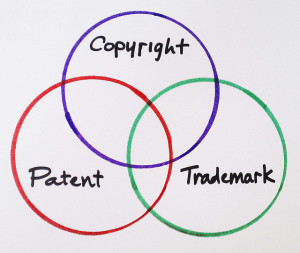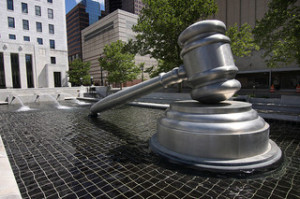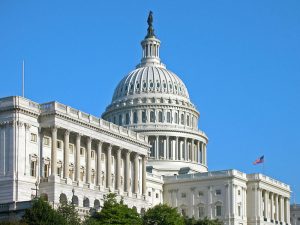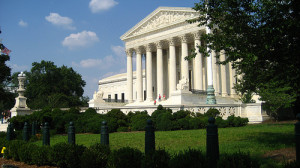If you doubted it before, you can stop now. The trend of courts finding ways to protect trademark licensees from the harsh effects of losing their trademark license rights in bankruptcy is in full swing.
The latest example comes in the Crumbs Bake Shop, Inc. Chapter 11 bankruptcy case in New Jersey. On October 31, 2014, Judge Michael B. Kaplan of the U.S. Bankruptcy Court for the District of New Jersey rejected a motion by the buyer of the assets of Crumbs to clarify, among other things, that it purchased the Crumbs trademarks free of trademark licenses previously entered into by Crumbs. In a 22-page revised decision dated November 3, 2014, Judge Kaplan identified three issues facing the court:
I. Whether trademark licensees to rejected intellectual property licenses fall under the protective scope of 11 U.S.C. § 365(n), notwithstanding that “trademarks” are not explicitly included in the Bankruptcy Code definition of “intellectual property”;
II. Whether a sale of Debtors’ assets pursuant to 11 U.S.C. § 363(b) and (f) trumps and extinguishes the rights of third party licensees under § 365(n); and
III. To the extent there are continuing obligations under the license agreements, which party is entitled to the collection of royalties generated as a result of third party licensees’ use of licensed intellectual property.
Let’s examine how the court addressed these three issues, one by one. As discussed below, the court’s Section 365(n) analysis raises the most questions.
Another Lubrizol Rejection. Before turning to the Section 365(n) question, the court first looked at the impact of rejection on an intellectual property license. The court examined the 1985 Fourth Circuit decision in Lubrizol Enterprises, Inc. v. Richmond Metal Finishers, Inc., 756 F.2d 1043 (4th Cir. 1985), which held that, upon rejection of a license agreement by a debtor-licensor, the licensee loses its rights to the intellectual property. The Crumbs bankruptcy court stated that it “is not persuaded by the decision.” It cited the Seventh Circuit’s decision in the Sunbeam Products case (which disagreed with Lubrizol‘s interpretation of the effect of rejection under Section 365(g)), and noted that it is “not alone in finding that its reasoning has been discredited.” The Crumbs court decided not to follow Lubrizol but did not adopt the Seventh Circuit’s approach to the issue. Instead, it turned to Section 365(n) and equitable considerations.
Section 365(n) And Trademarks. The court reviewed the language and legislative history of Section 365(n) of the Bankruptcy Code and its companion definition of “intellectual property” in Bankruptcy Code Section 101(35A). Looking at Third Circuit precedent, it examined Judge Ambro’s concurrence in the Third Circuit’s 2010 decision in In re Exide Technologies. The Crumbs court then considered the consequences of the congressional decision not to include trademarks in Section 101(35A)’s definition of intellectual property.
- Like Judge Ambro in Exide Technologies, the bankruptcy court pointed to the passage in the legislative history of Sections 365(n) and 101(35A) about postponing congressional action on trademark licenses “to allow the development of equitable treatment of this situation by bankruptcy courts.”
- The Crumbs court stated that reasoning by negative inference — and thereby to hold that Congress’s omission of trademarks from Section 101(35A)’s definition of intellectual property means that Section 365(n)’s protections do not extend to trademarks and trademark licensees lose their rights — would be improper.
- The court concluded that “Congress intended the bankruptcy courts to exercise their equitable powers to decide, on a case by case basis, whether trademark licensees may retain the rights listed under § 365(n)” and found “it would be inequitable to strip” the trademark licensees “of their rights in the event of a rejection, as those rights had been bargained away by Debtors.”
- The Crumbs court also commented on the passage of the Innovation Act by the House of Representatives, which if enacted would add trademarks to Section 101(35A)’s definition of intellectual property. While not dispositive, the court noted that the legislation showed that Congress was aware of the prejudice to trademark licensees that would result from the position advanced by the buyer.
- Without explicitly holding that Section 365(n) itself applies to all trademark licenses, the Crumbs court granted the trademark licensees Section 365(n)’s protections on equitable grounds.
A Closer Look At The Court’s Section 365(n) Analysis. The Crumbs decision appears to be the first holding that Section 365(n)’s protections can be extended to trademark licensees, despite Section 101(35A)’s intentional omission of trademarks. The other courts protecting trademark licensees, including the Third and Eighth Circuits, found the trademark licenses at issue no longer executory, while the Seventh Circuit in Sunbeam Products held that rejecting a trademark license does not terminate the licensee’s IP rights. Although the Crumbs court did not expressly hold that Section 365(n) applies to trademark licenses in all cases, the court held it could invoke the specific protections of Section 365(n) (and that section’s royalty requirements) for trademark licensees on equitable grounds.
Does “Means” Mean Anything? Although the Crumbs court’s result is consistent with the recent trend, its analysis is questionable. Extending Section 365(n) rights to trademark licenses, even on an equitable basis, appears to conflict with the statute’s language. Section 101(35A), the definition of intellectual property on which Section 365(n) is based, begins with “The term ‘intellectual property’ means” and then lists six specific categories of intellectual property. As we know, trademarks, service marks, and trade names are not among them. Section 101(35A)’s use of the word “means” is significant, notwithstanding the legislative history about the development of equitable treatment, a subject on which the statute itself is silent. The bankruptcy court’s decision in Crumbs did not discuss the use of the term “means” in Section 101(35A), but that term and its significance has been construed by the U.S. Supreme Court in another context.
- In Burgess v. United States, 128 S.Ct. 1572 (2008), citing 2A N. Singer & J. Singer, Statutes and Statutory Construction § 47:7, pp. 298-299, and nn. 2-3 (7th ed. 2007), the Supreme Court held, in the context of a criminal statute: “‘As a rule, [a] definition which declares what a term `means’ … excludes any meaning that is not stated.’ Colautti v. Franklin, 439 U.S. 379, 392-393, n. 10, 99 S.Ct. 675, 58 L.Ed.2d 596 (1979) (some internal quotation marks omitted).”
- In footnote 3 of the Burgess decision the Court actually examined several Bankruptcy Code definitions, two of which used the term “means,” in support of its statutory construction that “means” is exclusive.
- Although the Crumbs decision did not hold that Sections 101(35A) and 365(n) apply to trademarks in all cases, it extended Section 365(n) rights, expressly by name, to trademark licensees on equitable grounds. Given Congress’s use of the restrictive term “means” in the statutory definition, and its intentional omission of trademarks, service marks, and trade names from Section 101(35A), extending Section 365(n)’s statutory protections to trademark licensees seems to create an unnecessary conflict with the language of the statute.
- Instead of invoking Section 365(n), the Crumbs court could have used alternatives approaches to protect the trademark licensees and avoided a conflict with Section 101(35A)’s language. It could have ruled, as Judge Ambro suggested in his Exide Technologies concurrence, that on equitable grounds rejection of a trademark license does not deprive the licensee of its rights. Likewise, it could have held, as the Seventh Circuit did in Sunbeam Products, that rejection does not terminate a counterparty’s license rights at all.
Was The Sale Free And Clear Of The Trademark Licenses? Having concluded that the protections of Section 365(n) should apply to the trademark licensees in this case, the Crumbs court addressed whether the asset sale under Sections 363(b) and (f), which included the trademarks, was “free and clear” of the licensees’ interests. The buyer argued that the licensees were given notice of the proposed “free and clear” sale but failed to object, thereby impliedly consenting to the extinguishment of their Section 365(n) rights. However, after examining the notice given in the case, the Crumbs court concluded that the licensees were not provided with adequate notice that the sale put their rights at risk.
- The court observed how a party had to “traverse a labyrinth of cross-referenced definitions and a complicated network of corresponding paragraphs with annexed schedules” to determine what was being sold. The court admitted that it had difficulty following the “definitional maze” and observed that “there is no clear discussion as to what rights were purported to be taken away as a result of the sale,” meaning that the trademark licensees had no apparent reason to believe that an objection was needed to retain their rights under Section 365(n).
- The court acknowledged that a proposed order was part of the Debtors’ moving papers, and “addressed that the sale was to be clear of licensees’ rights.” However, the court noted that this reference was “a mere ten words, buried within a single twenty-nine page document, which itself was affixed to a CM/ECF filing totaling one hundred twenty-nine pages.”
- Under these circumstances — with no other express reference to the licensees, Section 365(n) rights, or the stripping of those rights — the Crumbs court held it would be inequitable to find that the licensees consented to the termination of their rights.
- The Crumbs court also held, as a matter of statutory construction, that Section 365(n), a more specific provision, is not overcome by the broad text of Section 363(f) and its free and clear language. “Nothing in § 363(f) trumps, supersedes, or otherwise overrides the rights granted to Licensees under § 365(n).” This ruling again raises the issue whether Section 365(n) can be applied to trademark licenses in the first place.
Which Party Is Entitled To Royalties Under The License Agreements? The court also addressed whether the buyer, as the new owner of the trademarks, or the debtor, as the party to the trademark licenses that were not assigned to the buyer, was entitled to payment of ongoing royalties under those agreements. The court cited the Third Circuit’s decision in In re CellNet Data Sys., Inc., 327 F.3d. 242 (3d Cir. 2003), and its ruling that Section 365(n) links royalties to the license agreement rather than the intellectual property. The Crumbs court concluded that because the license agreements had not been assigned, the buyer did not obtain royalty rights under the licenses going forward (although it did purchase any unpaid pre-closing royalties through its acquisition of accounts receivable). However, since the Debtors no longer owned the trademarks, the court questioned how anyone other than the buyer could perform under the trademark license agreements and, accordingly, concluded that rejection likely is necessary.
Conclusion. Over the past four years, one of the most significant developments at the intersection of IP and bankruptcy law has been how courts have used factual, legal, and equitable approaches to protect trademark licensees from the harsh effects of rejection. The Crumbs case, pending in New Jersey in the Third Circuit, built on Judge Ambro’s concurring opinion in Exide Technologies and extended, on an equitable basis, the protections of Section 365(n) to trademark licensees. However, the Crumbs court seems to have gone too far in applying Section 365(n) itself to trademark licenses — despite the fact that Section 101(35A)’s definition of intellectual property does not include trademarks. Given Section 101(35A)’s use of the restrictive term “means,” the Crumbs court’s statutory interpretation, and its reliance on legislative history, is questionable. Although the Crumbs decision is further evidence of the continuing trend of courts protecting trademark licensees in bankruptcy, courts would be on stronger ground if they did so without applying Section 365(n) itself to trademark licenses.
Image Courtesy of Flickr by Steve Snodgrass







